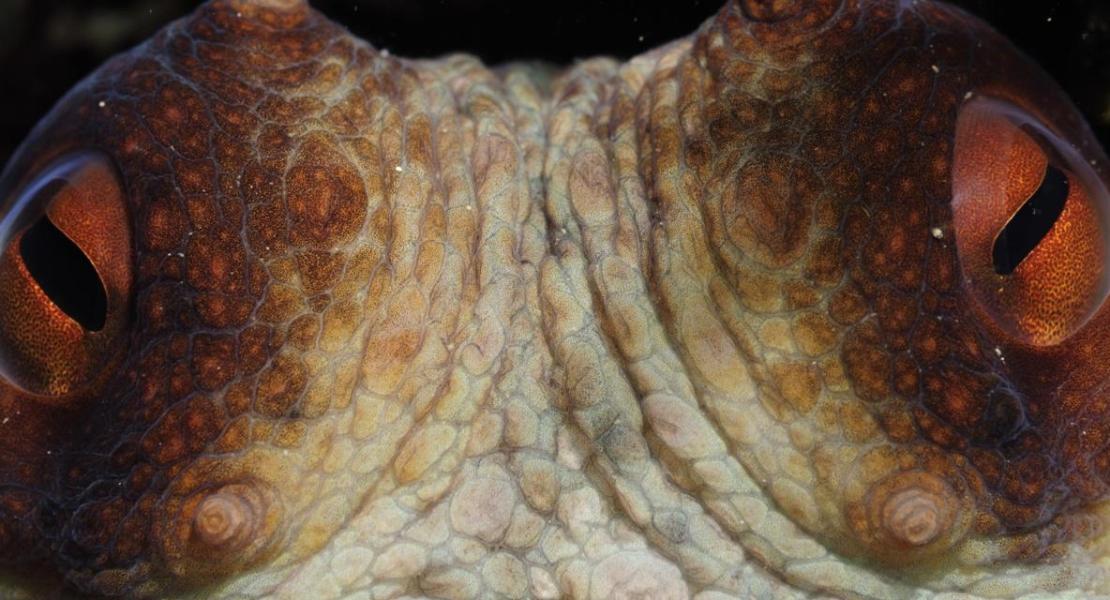Octopuses make for unusual lovers. To mate successfully, a male octopus must approach a female, and gently probe her with a single arm. He may grab her, but carefully, before inserting his arm up into her body, injecting packets of sperm. After sex, a male octopus is probably not expecting to be probed by a female. He is not expecting to feel the brush of her arm, as it maliciously coils around his body. He is not expecting her to squeeze, cutting off the supply of water to his gills. He is not expecting to be held in a deadly, suffocating embrace. Yet that exact fate befell one male common reef octopus swimming in the seas of Fiabacet Island, Indonesia. In an extraordinary act, witnessed by scientists, the male octopus was strangled to death by his female lover, just moments after having mated with her. The behaviour is so rarely seen that the incident, and a couple of others like it, may change our understanding of octopus behaviour.
Octopuses have long been considered relatively gentle creatures. Though they use their eight arms to catch prey, which is devoured using a large, sharp beak in their mouths, they tend to avoid aggression. Octopuses are more likely to retreat from a threat, such as a predator, than to fight, and they tend to shy away from most confrontations with other animals, says Christine Huffard, a marine biologist at the Monterey Bay Aquarium Research Institute, at, Moss Landing, California, US. In fact, octopuses spend most of their time, and use a variety of strategies, trying not to be seen. “Being overly aggressive to other animals on the sea floor would defy that strategy by attracting attention,” she says.
They can become aggressive with each other, particularly when fighting over food, dens, and mates. But they tend to grapple, pushing at each other, and pulling at their respective arms. They weren’t thought to be constrictors, strangling each other as a snake might suffocate its prey. However, Christine Huffard and colleagues have witnessed two separate incidents of octopuses doing just that in the wild. The first occurred during a dive within 10 metres of water off Fiabacet Island, when the researchers came upon a female common reef octopus sitting exposed on a coral reef outside her den. Nearby, sat a slightly smaller male. For 15 minutes the two animals mated. Then the female unexpectedly lunged forward, and with two arms, grabbed the male around his mantle, a structure octopuses use as a respiratory chamber to pass water through a funnel and across their gills. She dragged the male towards her. After two minutes, she then wrapped an arm around the opening to the mantle, and squeezed tight. After another two minutes, the male stopped moving. The female then enveloped the male’s body with her own and dragged him into her den, where the scientists presume she ate him.
Then, divers observed a wonderpus octopus repeatedly approach and chase a mimic octopus foraging for food. The encounter seemed to end peacefully, but when reviewing images taken of the event, the scientists realised that the wonderpus octopus had actually wrapped an arm around the mantle of its rival, trying to strangle it. Both incidents are reminiscent of another witnessed in 2007, when scientists observed one merciless female spend two days cannibalising a small male, having previously attacked and suffocated him after having mated with him 13 times. For now, scientists do not know how common constricting might be in these or other octopuses in the wild. But such deadly struggles do appear to make octopuses unique; as the first invertebrates known to aggressively grasp and kill another animal using constricting. Constricting might also prevent the subordinate octopus repelling the attack by expelling ink, which is also released through the funnel in the mantle. Expelling ink is a defensive tactic usually used to repel predators, as it clouds the water, and potentially contains irritating chemicals. For zoologist Mark Elgar of the University of Melbourne, Australia, an expert on invertebrate mating behaviour, the actions of the female octopuses make sense, given their eight-pronged anatomy. “The specific method by which the female octopus captures and kills her mate – constricting him with her many legs – is novel, but only because this can be done only by an octopus,” says Elgar. Huffard agrees. Octopuses are a type of mollusc known as a cephalopod, a group that also includes squid. “This unique anatomy opens doors to many behaviours that are unavailable to other molluscs, constricting being just one of them.” Other invertebrates, such as insects and nudibranchs, are known to engage in sexual cannibalism. Female black widows and praying mantis are notorious for killing and eating males before, during or after sex. And similarly gruesome attacks have been observed in chironomid flies. A female chironomid uses her mouthparts to pierce the head of her male mate and, after extracting his body fluids as he transfers sperm to her, carries his desiccated carcass against her body for days. Males are thought to be eaten as, once they have mated, they can be a valuable source of food. Male Argiope spiders, for example, tend to be consumed by the female after their second insemination. For Huffard, this is a subject ripe for research: “People have studied that topic extensively in arthropods, especially arachnids, but not in rigorous studies using cephalopods.” “The more we get into the water and watch animals quietly from a distance, the more likely we might be to understand one day why female cephalopods might kill their mate,” she says.
